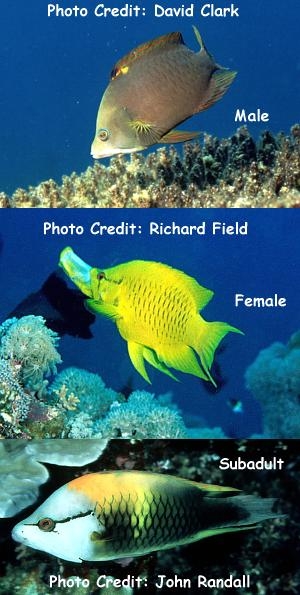
By Bob Goemans

Not Reef Tank Suitable
Likely Fish-Only Tank Suitable
Range: Indo-West Pacific Ocean: Red Sea to Hawaiian and Tuamotu Islands, north to Southern Japan, and south to New Caledonia.
Size: 20 inches (50 cm)
Natural Environment: Inhabits coral rich areas in lagoons and seaward reefs and usually found at depths between 3 – 150 feet (1– 45 m) where it feeds on coral dwelling crustaceans and small fishes.
General Husbandry: Rarely seen in the trade with subadults and females usually brown while some other females are yellow. Males are usually dark brown with green edges on its scales, possible a yellow bar on its side, and/or a gray head with a black stripe behind the eye. Juveniles spend most of their time among coral branches. Sometimes adults will curl up with their tail towards their head and accompany floating debris to get to adjacent islands. It can change its color to match that of the debris. Colors vary depending upon the age of the specimen, collection areas, and breeding timeframes.
Best maintained in fish-only aquariums having open swimming areas and several rocky crevices to hunt and/or hide, as this species is quite shy. Those in this genus will rearrange bottom dwelling corals in its search for tasty bottom dwelling invertebrates, as it will eat smaller fishes, snails, crabs, and shrimp.
Requires a meaty diet, including fortified brine shrimp, mysis, and other meaty type marine-based frozen or fresh foods, and should be fed twice daily. May be very difficult to get feeding in the beginning, and if so, try some live foods, such as black worms (Lumbriculus variegatus), adult fortified brine shrimp and glass/grass/ghost shrimp.
Taxonomy:
Order: Perciformes
Suborder: Labroidei
Family: Labridae
Genus: Epibulus
FYI: The mouth of this species can extend outward, about half the length of its body. When not in use to capture prey, it conveniently folds under the head.
The aquarium should have small pieces of rocks for the wrasse to ‘play’ with in its daily search for prey.
Can greatly stir bottom sandbeds creating large clouds of sand being dispensed in many directions.
Slow swimming tankmates cannot compete with this wrasse at feeding time.
One male per aquarium.
Colors tend to fade in captivity.
Experience Level: Intermediate
Temperament: Semi-aggressive
Diet: Carnivore
Coral Safe: Yes
Fish Safe: With caution
Invertebrate Safe: With caution
Acclimation Time: 30 minutes+
Aquarium Environment: Fish-only aquarium
Tankmates: Larger, active and moderately aggressive
Minimum Tank Size: 150 gallons
Temperature Range: 72 - 82°F (22 – 27°C)
Specific Gravity: 1.020 - 1.026
pH: 8.0 - 8.5
